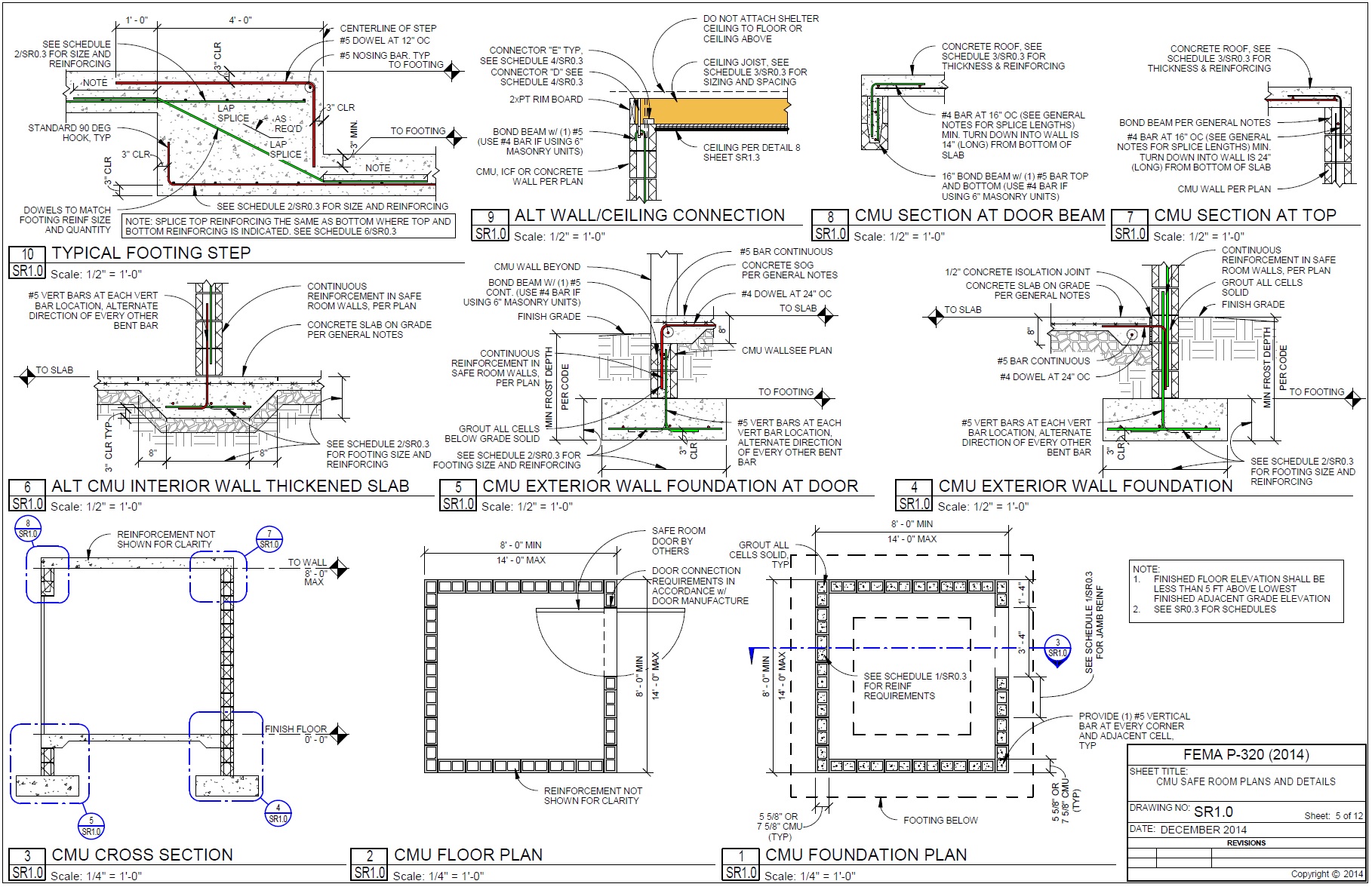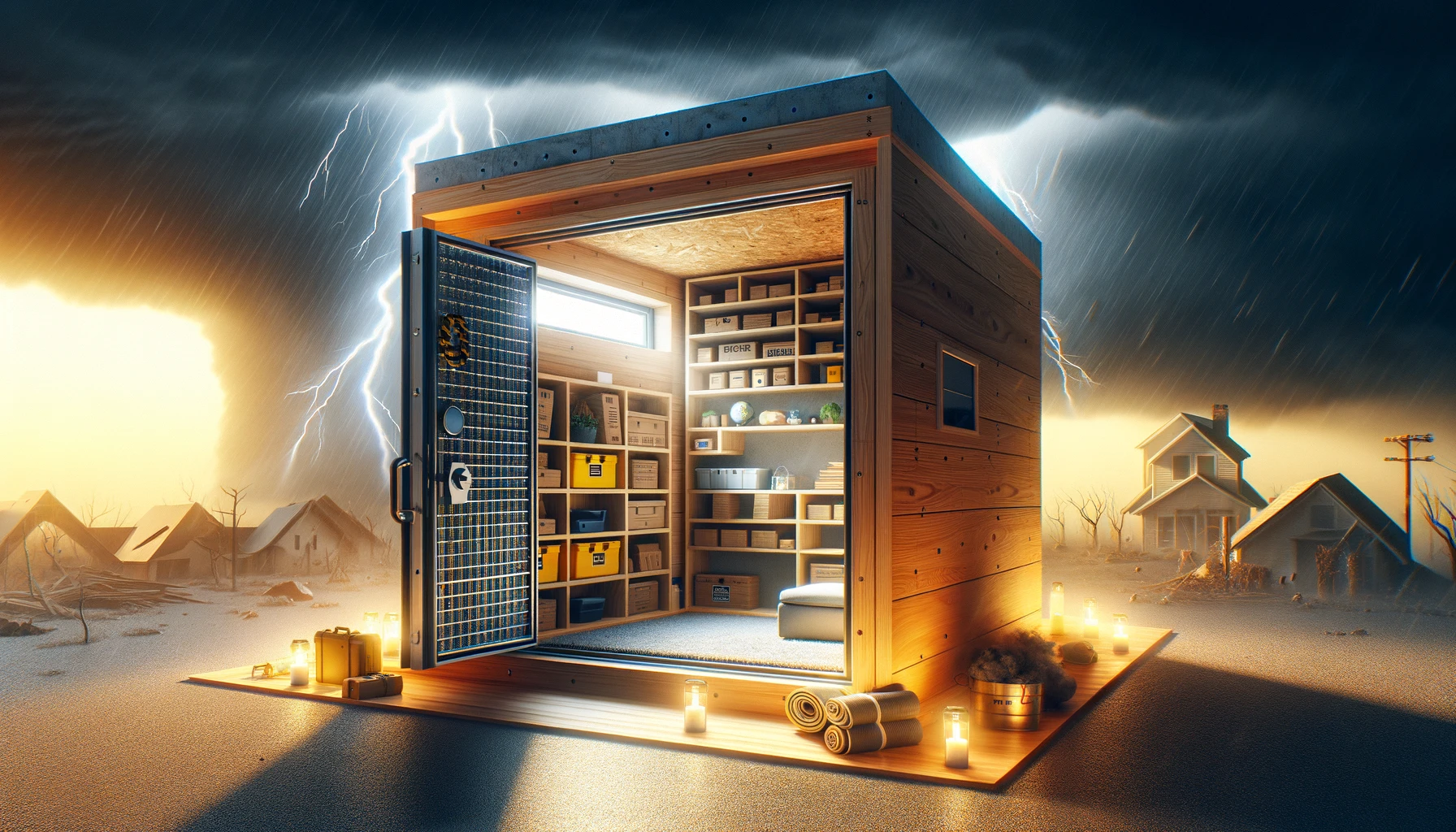Introduction
Every year, extreme windstorms like tornadoes and hurricanes cause extensive damage and loss of life. While building codes aim to protect structures, they often fall short when it comes to extreme weather events. This is where storm shelters and safe rooms come in. Designed to withstand even the most severe conditions, these protective spaces can be lifesavers.
Standards and Best Practices
If you’re considering installing a storm shelter or safe room, it’s crucial to adhere to established standards and best practices. These include:
- International Code Council 500/National Storm Shelter Association Standard for the Design and Construction of Storm Shelters
- FEMA P-361 Safe Rooms for Tornados and Hurricanes
- FEMA P-320 Taking Shelter from the Storm: Building a Safe Room for Your Home or Small Business
For an in-depth understanding of how to create safe rooms compliant with FEMA P-361 standards, refer to our detailed guide, “Creating Safe Havens: A Comprehensive Guide to Tornado and Hurricane Safe Rooms – FEMA P-361 Part A“. These guidelines ensure that the shelter offers “near-absolute protection” during extreme weather events.
Key Features
When designing a storm shelter or safe room, consider the following:
- Structural Integrity: The walls, roof, and doors should withstand extreme winds and flying debris.
- Occupancy: Designed for 1- and 2-family dwelling units with a maximum capacity of 16 persons.
- Location: Should be within 150 feet of the home for easy access.
- Ventilation: Natural ventilation is essential.
- Emergency Supplies: Space for storing essentials like food, water, and first-aid kits.
- Additional Amenities: Consider lighting, fire protection, and standby power.
Who Needs One?
The need for a storm shelter or safe room depends on various factors, including your geographic location and the local risk for extreme weather events. However, everyone is at some risk, making these shelters a wise investment for homeowners.
How to Build
- Consult Professionals: A licensed design professional and contractor are crucial for ensuring the shelter meets all guidelines and codes.
- Permits and Approvals: Before construction, make sure you have all necessary permits.
- Construction: Whether building a new home or retrofitting an existing one, ensure that the shelter meets all structural requirements.
- Cost: The price varies based on size, materials, and location, but federal assistance may be available through FEMA.
Ensuring Success: Adherence to Standards and Permitting
To ensure the success of your storm shelter or safe room project, it’s crucial to follow established guidelines and standards. Here’s how to make sure your shelter is up to code and provides the highest level of protection:
Compliance with Standards
- ICC 500/NSSA: All storm shelters must comply with the ICC 500/NSSA Standard for the Design and Construction of Storm Shelters, as referenced by the International Residential Code (IRC).
- FEMA Guidelines: If your shelter is designated as a safe room and you’re seeking FEMA hazard mitigation funding, you’ll also need to meet the additional requirements laid out in FEMA P-320 and P-361.
Type of Construction
- Prefabricated: These are pre-made and typically easier and quicker to install.
- Site-Built: These can be custom-built to your specifications and can be constructed according to FEMA P-320’s prescriptive design criteria. If you choose this route, you may need to consult a licensed design professional for site-specific conditions such as flood elevation.
Permitting
Regardless of whether you’re adding a shelter to a new or existing home, you’ll need to obtain the necessary permits. The permitting process should include:
- Plan Review: Before construction begins, your plans will be reviewed to ensure they meet all local, state, and federal guidelines.
- Inspections: During and after construction, inspections should be carried out to verify compliance, particularly for anchoring systems to existing slabs.
- Licensed Professionals: A licensed design professional may be required to assess flood elevation and other site-specific conditions.
Compliance and Codes: A Concise Guide
Ensuring your storm shelter or safe room meets the highest safety standards requires adherence to various codes and guidelines. Below is a summarized outline of the key codes you need to be aware of:
International Residential Code (IRC)
- Applicability: 2009, 2012, 2015, 2018, and 2021 editions.
- Key Section: R323.1 mandates that storm shelters comply with ICC 500-2014.
- Retrofitting: Section R102.7.1 and Appendix J cover additions, alterations, and repairs.
ICC 500/NSSA Standard for Storm Shelters
- Year: 2014
- Purpose: To establish minimum requirements for the design, construction, and installation of storm shelters.
- Recognition: Referenced in IRC and International Building Code editions from 2009 to 2018.
FEMA Guidelines
- P-361 (2015 Edition): Aimed at design professionals, it provides technical guidance for tornado and hurricane-safe rooms.
- P-320 (2014 Edition): Targeted at homeowners, builders, and contractors, offering decision-making guidance for safe rooms.
Conclusion
Investing in a storm shelter or safe room is an investment in safety. By adhering to guidelines and consulting professionals, you can ensure that your shelter offers the utmost protection against extreme weather events.
For more personalized guidance, consult with engineers and local building codes specific to your location. For immediate service or consultation, you may contact us at Allied Emergency Services, INC.
Contact Information:
- Phone: 1-800-792-0212
- Email: Info@AlliedEmergencyServices.com
- Location: Serving Illinois, Wisconsin, and Indiana with a focus on the greater Chicago area.
If you require immediate assistance or have specific questions, our human support is readily available to help you.
Disclaimer: This article is intended for informational purposes only. For professional advice, consult experts in the field







